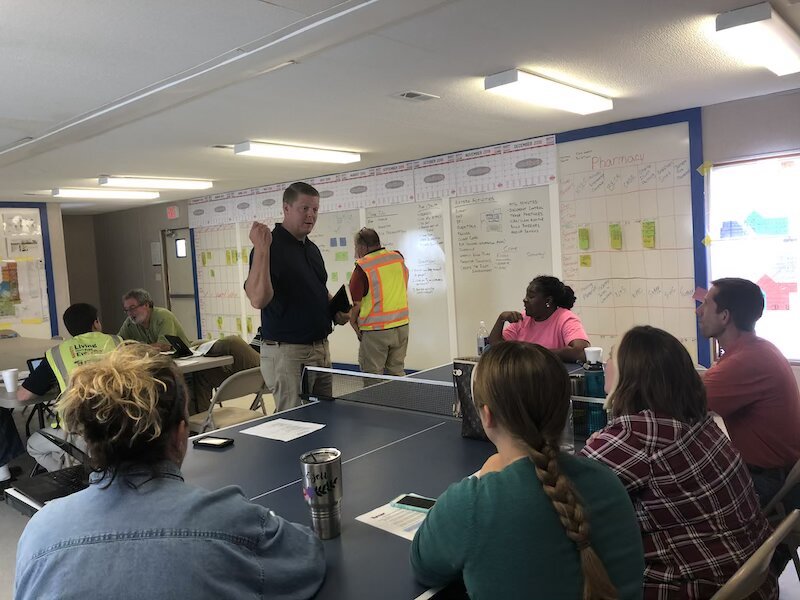Talk to contractors in just about any town in the country, and the topic of labor shortages inevitably comes up. Many contractors see the problem as being chronic with no end in sight, at least while the economy remains strong. But there are companies that are trying to do something about it, with an eye toward cultivating the next generation of plumbers, electricians, carpenters, and other construction laborers.
Earlier this month Lowe’s Cos., the giant home-improvement retailer, teamed with more than 60 partners to introduce Generation T, an effort to shift negative or indifferent perceptions about the trades among students and their parents by demonstrating mobility and career opportunities that skilled trades offer.
Lowe’s and SkillsUSA hosted the first-ever Generation T Bunk Build at Rose Bowl Stadium in Pasadena, Calif. This regional community service project provided 300 students enrolled in SkillsUSA’s carpentry program the chance to work with skilled carpenters to build 100 bunk beds for the nonprofit Sleep in Heavenly Place.
Last summer, Turner Construction’s Nashville office, in partnership with the Rutherford County (Tenn.) Chamber of Commerce, conducted a Teacher Externship Program, an immersive two-week course that gives local middle-school teachers exposure to the ins and outs of the construction industry, so they can share their experiences with their students.
This is the second year this program has been offered. The first year draw five teachers, and the second 20 participants, according to Paul Lawson, Project Executive of Turner Nashville.
Lawson—who chairs the Chamber’s Rutherford Works Construction Council and is a member of its Executive Workforce Council—says that the Teacher Externship Program is part of a larger effort by the Chamber and county to expand the market’s labor force.
The two-week program gave the teachers an inside look at how a construction company works. They spent time at Turner’s office with estimators and area managers. The teachers also went into the field at one of Turner’s local active job sites: a $48 million, 95,623-sf expansion of the St. Thomas Rutherford Hospital in Murfreesboro, Tenn., which is scheduled for completion next April. (Gresham Smith is the architect and engineer on this project.)
Lawson says the teachers “shadowed” project managers, two engineers, two supervisors, and the project’s safety manager.
Turner Nashville intends to offer this program next summer, and Lawson would like to expand the course beyond two weeks, “which is pretty quick” for giving teachers with no previous construction knowledge or hands-on understanding about what’s involved in building a building.
The program, he says, “has helped to open their eyes to what construction really is, and to dispel misconceptions about construction work,” says Lawson. “A teacher can have an impact on, what, 60 students a year.”
For teacher David Duez, the program was a revelation that he shared with his eighth-grade Career Explorations class through a series of lessons. “The kids are very interested in it,” he says. “They are young, but it doesn’t hurt to throw as much as we can at them, and if something sticks, great.”
Related Stories
| Dec 3, 2013
Creating a healthcare capital project plan: The truth behind the numbers
When setting up a capital project plan, it's one thing to have the data, but quite another to have the knowledge of the process.
| Dec 3, 2013
Architects urge government to reform design-build contracting process
Current federal contracting laws are discouraging talented architects from competing for federal contracts, depriving government and, by inference, taxpayers of the best design expertise available, according to AIA testimony presented today on Capitol Hill.
| Dec 3, 2013
Construction spending hits four-year peak after rare spike in public outlays
An unusual surge in public construction in October pushed total construction spending to its highest level since May 2009 despite a dip in both private residential and nonresidential activity.
| Nov 27, 2013
BIG's 'oil and vinegar' design wins competition for the Museum of the Human Body [slideshow]
The winning submission by Bjarke Ingels Group (BIG) and A+ Architecture mixes urban pavement and parkland in a flowing, organic plan, like oil and vinegar, explains Bjarke Ingels.
| Nov 27, 2013
Retail renaissance: What's next?
The retail construction category, long in the doldrums, is roaring back to life. Send us your comments and projects as we prepare coverage for this exciting sector.
| Nov 27, 2013
Pediatric hospitals improve care with flexible, age-sensitive design
Pediatric hospitals face many of the same concerns as their adult counterparts. Inpatient bed demand is declining, outpatient visits are soaring, and there is a higher level of focus on prevention and reduced readmissions.
| Nov 27, 2013
Exclusive survey: Revenues increased at nearly half of AEC firms in 2013
Forty-six percent of the respondents to an exclusive BD+C survey of AEC professionals reported that revenues had increased this year compared to 2012, with another 24.2% saying cash flow had stayed the same.
| Nov 27, 2013
Wonder walls: 13 choices for the building envelope
BD+C editors present a roundup of the latest technologies and applications in exterior wall systems, from a tapered metal wall installation in Oklahoma to a textured precast concrete solution in North Carolina.
| Nov 27, 2013
University reconstruction projects: The 5 keys to success
This AIA CES Discovery course discusses the environmental, economic, and market pressures affecting facility planning for universities and colleges, and outlines current approaches to renovations for critical academic spaces.
| Nov 26, 2013
7 ways to make your firm more successful
Like all professional services businesses, AEC firms are challenged to effectively manage people. And even though people can be rather unpredictable, a firm’s success doesn’t have to be. Here are seven ways to make your firm more successful in the face of market variability and uncertainty.

















